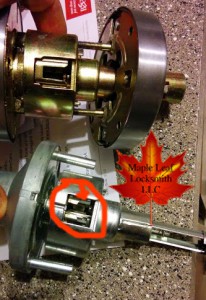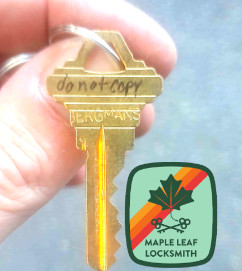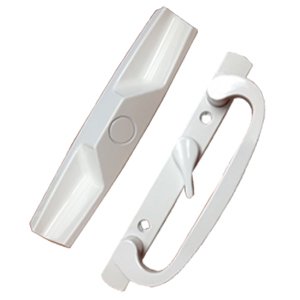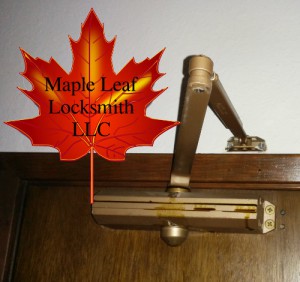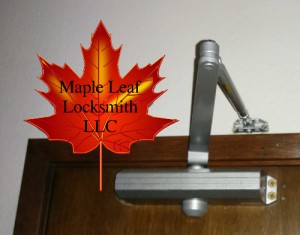There are a few ways to make a key for a vehicle if you have lost all of the working keys. Usually this relies on accessing the car’s computer through its ODB2 port. If there is a leak in your moonroof and you lost the keys to your car, don’t put it off. Give me a call before standing water forms on the floor of your car! High humidity will create corrosion in the ODB2 port among other things.
When the odb2 port gets corroded the programming equipment won’t work and it makes it more laborious to program a key into your car, or you have to try to clone your key.
Speaking of odb2 ports, they are used by high-tech thieves to steal cars. Now a company has released an odb2 port lock to prevent somebody from programming a key into your car and driving away with it while you sleep. Read about it here.
If you are interested in the technology behind keeping your car’s door locked there is a lot of information on the internet about it. The physical locks often employ wafers and a sidebar which makes them difficult to pick, though there are plenty of easily pickable locks in vehicles being produced even now. Opening a locked car door is not usually very hard if you have some inexpensive tools designed for the purpose and one can buy a set of these tools along with a manual for how to use them and which tool to use for the car they are confronted with for a cool $200 or so or a really cheap set for $20.00. These tools usually set off any car alarm though.
Recently I have read a lot of misinformation about the security of cars due to car theft. I am no expert on how to steal a car but I have a lot of experience opening locked cars without a key and usually it sets the alarm off unless you manipulate one of the door locks. If you are worried about your car being stolen you should find out if your car’s locks are easy to pick and if the car’s ignition requires a chipped key to start it. Without a chipped key that is already programmed into the vehicle, the vehicle won’t start or if it does it will only run for thirty seconds or so.
Also there is no “master key” for cars in the sense that the manufacturer made a key that will work in all cars. It would be suicide for a business to create a master key for their vehicles because it would be a short amount of time before that key fell into the wrong hands and duplicates were found for sale on alibaba.com. Even if the key didn’t fall into the wrong hands it wouldn’t take long for somebody to take their lock apart and reverse engineer the key by looking at what the key interacts with.
While there is no master key there are so-called jiggler keys that are popular with the tow-truck drivers and the vehicle repossessors. These will open lots of vehicle locks, even double sided wafer locks. If somebody used a jiggler key it would not set off the alarm. The jiggler key most likely wouldn’t start a recently made car from the last fifteen years because of its lack of transponder chip, though less expensive import vehicles like Hyundais didn’t use chips until quite recently and lots of box trucks and vans don’t use transponder chips still. If somebody used a jiggler key to get into your car they would still have to program a key into your vehicle’s computer to get it to drive away. This requires time and effort. A professional locksmith usually needs at least half an hour of time to take a door cylinder out of the door and get a key working with it and then may need more time to get some added cuts to make it work in the ignition.
If you live on a hill a criminal may not be too concerned with starting your car. They could just put your car in neutral and drag it to some other place like a warehouse where they have time to disable the car alarm. If they are familiar with the vehicle they would probably unplug the horns.
A lot of rumors have been floating around about the spoofing of keyless remotes for cars recently. This is unlikely for recent cars. There are documented weaknesses in the way keyless remotes work and the technology has been exploited by researchers but there are not known cases of criminals using these weaknesses in the wild. There may have been incidents of thieves blocking the transmission of the keyless remote with a radio jamming device which would make the car not receive the order to lock the doors, but this is less worrisome than criminals outright compromising the keyless remote encryption technology.
Some thieves have figured out they can use tasers in new and exciting ways to open car doors but this leaves evidence and isn’t widespread. If your vehicle has a combination lock on the door make sure to have that disabled ASAP as somebody who has a table of codes can and will unlock one of these doors in a few minutes. Unfortunately those locks are not sophisticated at all and don’t penalize people for putting in the wrong code too many times. A good electronic lock will disable the keypad for some amount of time if the wrong code is entered too many times. My favorite electronic safe lock can be programmed to do this for a specified number of minutes to hours.
Short story is this: if your car was stolen and it was made after 2000 somebody probably has a key to it or somebody towed it away in neutral unless the car was worth enough money that somebody with sophisticated tools and knowledge would want to steal it. When you buy a car from somebody in the same state you usually give them a piece of paper with your name and address on it and if they keep a key they can drive over to your house and unlock the car and drive away with it if they so choose which brings us to my final thought on the matter of preventing your car from being stolen.
When you buy a car from somebody and they know where you will be keeping the car it is just stupid not to reprogram the car so that the old keys don’t work. It is smart to rekey a house when you buy one for the same reason (well, nearly the same reason. Nobody is going to drive away with your house unless you live in a motorhome!). Another good idea if you have a car without an immobilizer or transponder in the key is to install a hidden kill switch. Get a club to lock your steering wheel. These things will slow somebody down and force them to examine your wiring scheme or remove your steering wheel to control the vehicle even in neutral.
If your car supports it consider getting a puck lock from slicklocks. No holes need to be drilled in your car and there are no quick easy ways to unlock these locks without a key.

